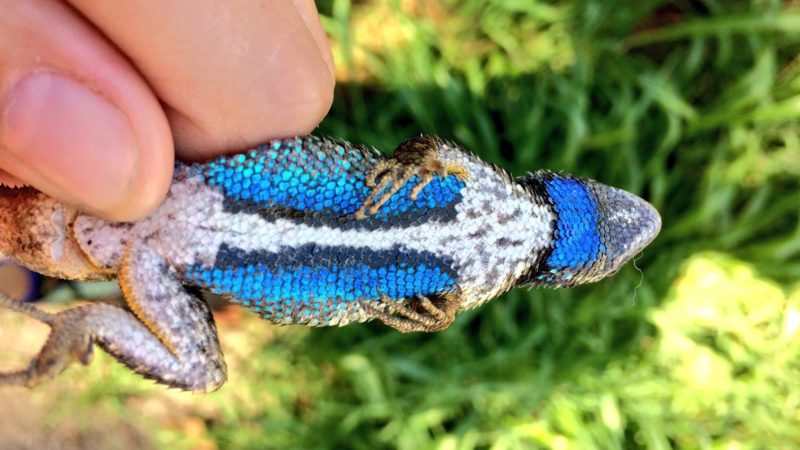
It has long been established that even the most innocuous of human activities can impact animal behavior. From birds mimicking phone ringtones to grins triggering aggressive responses from primates, people often have a greater impact on animal behavior than they realize. Now, a recently published UCLA study on local western fence lizards (Sceloporus occidentalis) has shown that the color of your T-shirt can influence reptile behavior.
Funded in part by the UCLA La Kretz Center for California Conservation Science and the Stunt Ranch Santa Monica Mountains Reserve, the study was conducted at the Stunt Ranch Reserve, a low human activity site as well as Griffith Park, a high human activity site.
“We thought maybe at Griffith Park they wouldn’t respond to color because they were used to human activity,” said Breanna Putman, a postdoctoral scholar in UCLA’s Department of Ecology and Evolutionary Biology and the Natural History Museum of Los Angeles County.
Putman tested four T-shirt colors—dark blue, light blue, red, and gray—and recorded the lizards’ escape behavior by measuring how close she could get to the lizards before they fled. Putman also determined her success catching them after they tried to flee.
The results were surprising. Lizards at the Stunt Ranch had the same responses to color as lizards at Griffith Park, suggesting that the level of human interaction the lizards were exposed to had no impact on their behavior. All that was left was to determine which color(s) the lizards found more or less frightening.
“We found that the lizards were not as afraid of blue as the other colors,” said Putman.
Lizards would flee an average of 100 cm (about a yard) away when Putman approached them wearing dark blue. However, when Putman wore a red T-shirt, the lizards fled when she was an average of 200 cm away. Putman was also able to catch the lizards twice as often while wearing dark blue than when wearing red, suggesting that the former group of lizards were less wary after being approached.
One explanation may be in the colors of western fence lizards themselves. Western fence lizards are also known as blue-bellied lizards, and the bright blue throat and belly color, particularly prominent in males, is a strong sexual signal in the species. Putman and her collaborators found that the lizards were most tolerant when approached with a T-shirt color similar to their sexually-selected signaling color.
Similar studies by other research groups involving avian subjects such as cardinals and flickers returned similar results. Those studies found that it was much easier to get closer to birds when wearing colors that matched the hue of their feathers.
“Being attracted to their own body color helps birds identify partners within their own species,” said Putman.
Putman said that the information gained from this study could help people create fewer disturbances when visiting habitats. Lizards fleeing from a red-shirted person, for example, could lose valuable foraging time but would be less inclined to flee and hide if that same person wore a dark-blue shirt. That might be something to consider next time you go for a hike in the mountains.
